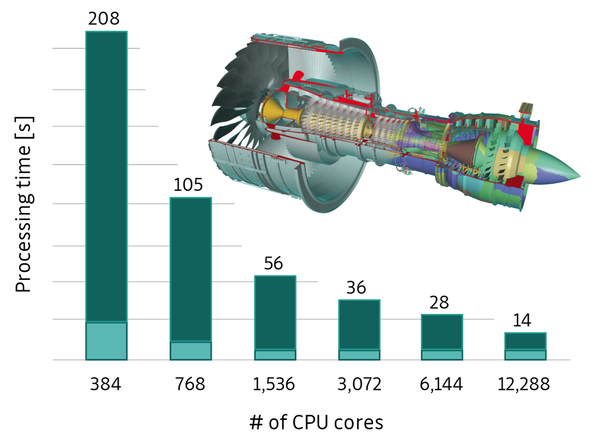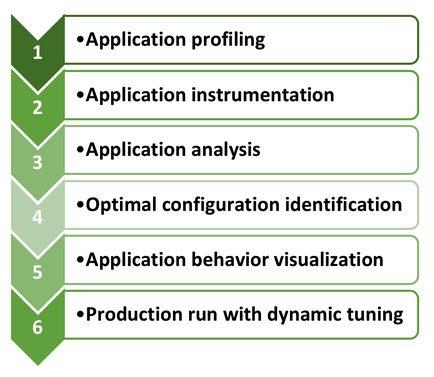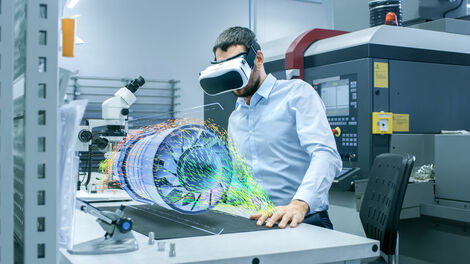The objective of the INFRA Lab research activities is development of in-house parallel applications for modern HPC infrastructures, optimization and acceleration of parallel codes of our users, and their optimal deployment on the IT4Innovations supercomputing infrastructure.
This includes, for example, parallelization, acceleration, and optimization of the simulation tool ESPRESO, which is one of the IT4Innovations flagship projects, development of tools for energy efficiency of HPC infrastructures, development and implementation of tools for medical data processing and visualization in cooperation with University Hospital Ostrava, parallelization and acceleration of tools for image synthesis (rendering) and scientific data visualization, and implementation of complex solutions for facilitating access to HPC infrastructures, such as Rendering-as-a-Service or Solver-as-a-Service.
Furthermore, the laboratory actively participates in the implementation of international projects. The most significant ones worth mentioning include the H2020 POP2 Centre of Excellence in HPC focused on analysis and optimization of parallel codes, the H2020 FET HPC READEX project aimed at runtime optimization of energy efficiency of HPC applications, and the Intel Parallel Computing Centre (IPCC) aimed at porting and optimization of codes for new HPC platforms.
Portfolio
Development and implementation of parallel applications for modern architectures
The PAR and INFRA Labs co-develop their in-house, highly parallel open-source simulation tool, ESPRESO, based on the finite element method for efficient use of an available HPC infrastructure.
While the PAR Lab is involved in developing new numerical methods and parallel algorithms, the INFRA Lab research team members specialize in optimizing and improving the scalability of all ESPRESO methods. The key development areas are as follows:
- parallelization of a highly scalable FETI solver and its acceleration using HPC accelerators (GPU, Xeon Phi, etc.)
- development of a highly parallel I/O module for loading, pre-processing, and storage of FEM meshes
- optimization of the FEM matrix generator for CPU (vectorization) and its GPU acceleration
- co-development of the Solver-as-a-Service platform
Analysis and optimization of HPC applications
We provide support in deployment of existing codes on the IT4Innovations HPC systems and our partners' systems. This support includes assistance with profiling given codes and their possible optimization when deployed on HPC platforms.
Since 2018, the laboratory has been a member of the POP2 (Performance Optimization and Productivity) Centre of Excellence funded by the H2020 program. Its main objective is to assist with parallel application analysis, identification of parts of codes most likely to contain bottlenecks, and recommend optimization methods leading to improved performance and scalability of a given application. Within the project, our services are provided free of charge to academic and research institutions as well as commercial organizations residing in the EU.
Research in the field of energy efficiency of HPC infrastructures (READEX, etc.)
IT4Innovations was a member of the European Horizon2020 Runtime Exploitation of Application Dynamism for Energy-efficient eXascale computing (READEX, 2015-2018) project consortium. This project resulted in the development of a method for run-time energy efficiency optimization of HPC applications.
Following on from this project, we currently work on the development of the open-source MERIC library, which not only monitors energy consumption of the analysed application sources but also tunes a wide range of hardware parameters affecting energy consumption. Using this library and associated tools allows us to perform detailed analyses of complex parallel application behaviour, visualization of measured data, and identification of the optimal tuned parameter configuration ensuring the highest possible energy savings.
We are also a member of the PowerStack initiative, bringing together experts worldwide who are involved in the energy consumption of computer chips, parallel applications, and supercomputing centres as a whole. The initiative objective is to identify individual layers affecting energy consumption, specification of their functionality and interface necessary for ensuring monitoring and inspection of the current and long-term energy consumption of the computing infrastructure, and to associate these measurements with individual application run-times.
Parallel image rendering using HPC infrastructures
Visualization of computer-generated scenes where reaching a real-life appearance of displayed objects is required is a computationally highly intensive process. This can be achieved by rendering. At present, the most widely used renderers are those which can faithfully simulate the physical behaviour of light. Making use of such renderers, it is thus possible to achieve top quality results indistinguishable or nearly indistinguishable from real images.
In this field, the laboratory successfully cooperates with the Blender Institute, which is responsible for developing the 3D Blender software. In particular, we are developing a version of the Blender Cycles renderer so that it can fully utilize the specific properties of our supercomputers and their computing power as a whole. Opportunities are thus created for interactive rendering of complex and computationally intensive scenes. We provide rendering services for our external partners using the extended version of the Blender software supported by non-accelerated as well as GPU accelerated nodes. Our solution is provided as a complex service entitled Rendering-as-a-Service. It allows users to perform remote rendering with the Blender environment while making yourself comfortable right at your computer.
Development in the field of virtual reality (VR)
Our laboratory research team is also engaged in the field of virtual reality, in particular, in the utilization of HPC resources to generate images for VR. This area is closely related to rendering using HPC infrastructure. One of the specific needs in this field is to generate high-resolution virtual scene images with high imaging frequency. Additionally, it is necessary that the user is enabled to interact with a virtual scene. Demands are thus placed on high computing power and low latency data transfer between the user and the data room.
Medical image data processing and visualization
Medical science is one of the fields of human activity that generates large amount of data from examining patients. Emphasis is placed on its processing, storage, and security. A typical example is the data generated by diagnostic tools using computer tomography (CT) or magnetic resonance (MR) imaging. IT4Innovations cooperates with the University Hospital Ostrava in processing this data. The objective of the joint activities is automation of the CT- and MRI-based 3D model design processes in order to both develop new diagnostic methods and increase the quality of the existing ones.
One case where information otherwise not available can be obtained from a 3D model is precise measurement of orbital fractures. When deciding whether a patient should undergo surgery or whether conservative treatment can be applied, the orbital fracture size is one of the key decision-making criteria. However, this dimension can only be determined approximately based on CT scans and a simplified empirical approach.
Railway simulator development
IT4Innovations is the co-investigator of a Technology Agency of the Czech Republic project, the objective of which is development of an obstacle detection system in railway traffic. For the detection system development, artificial intelligence tools in combination with state-of-the-art sensors for data collection and monitoring situations ahead of the train will be used.
The entire system will be supported by a software package for simulation of different conditions and events on a railway track, which would normally be very difficult to induce in real operation. A complete virtual simulator of railway track conditions will thus be developed allowing optimization of the developed detection system. Simultaneously, a brand-new product allowing development of analogous detection systems for different train environments will be created.







